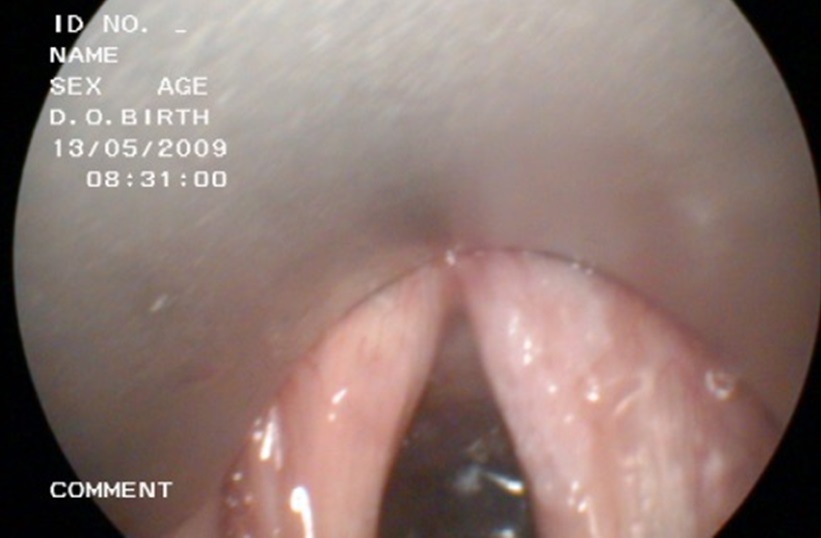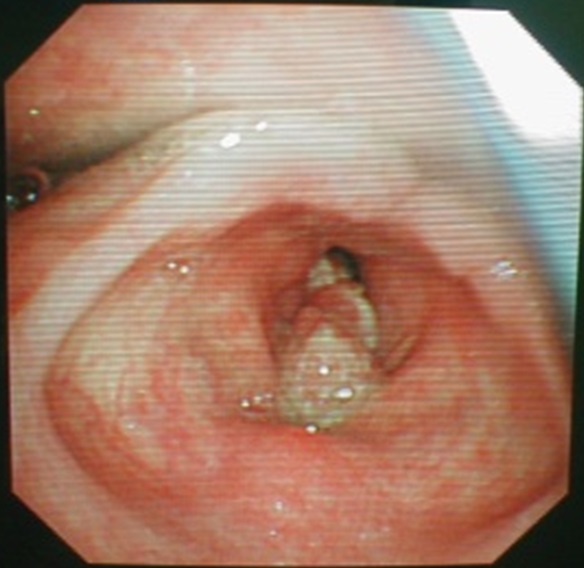 |
Fig. 1: Endoscopic view (examination of the larynx using a endoscope) showing a erosive mass at the left vocal fold (voice box) |
Introduction
Laryngeal cancer is caused by smoking. In America, 11,000 new cases are reported daily. It makes up 25% of head and neck cancers and 1% of all types of cancer. One third of the patients died because of difficulty in breathing and most are at the age of 60 – 70 years old. The ratio between men and women is 4: 1 and most of them are smokers.
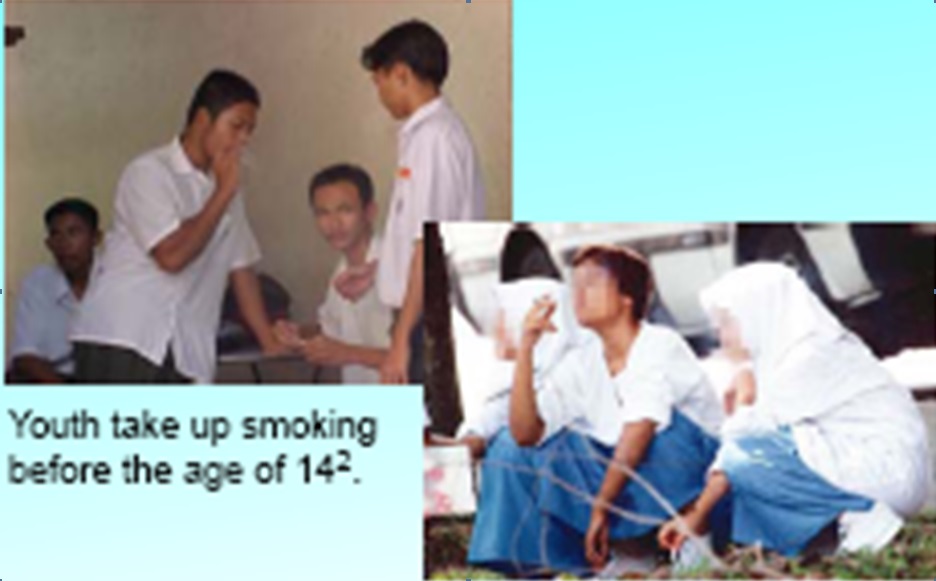 |
| Fig.2: Smoking predisposes to laryngeal cancer |
In Malaysia, the 1981 – 1988 statistics showed 54% of the cases were Chinese, 23% were Indians and 19% were Malays. Men to women ratio were 7.6: 1. This ratio is in decreasing trend in view of the increasing number of female smokers in Malaysia.
Causes of laryngeal cancer
Causes of laryngeal cancer
- Human Papilloma Virus
- Gastroesophageal reflux disease.
- Wood factory dust worker.
- History of radiation exposure
Presentation
- Hoarseness of voice and harsh voice is most common presentation
- Persistent cough or cough with blood
- Sore throat
- Difficulty in breathing or noisy breathing
- Difficulty in swallowing
- Frequent choking
- Neck mass
- Reduced appetite
- Weight loss
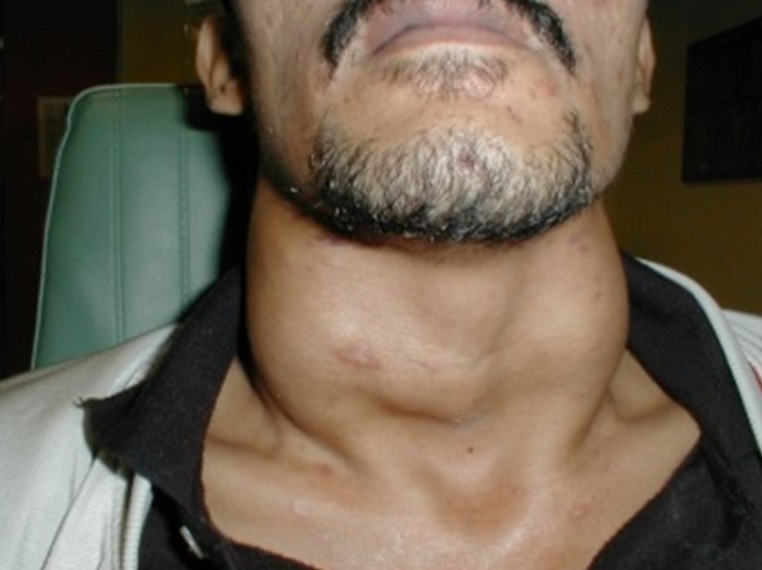 |
| Fig. 3: Neck nodes enlargement |
Investigation
If you experience any of the above symptoms, you need to be examined by otorhinolaryngology specialist who will examine your throat using a laryngeal endoscope and takes some tissue for laboratory examination. Imaging study such as CT scan or MRI will also be done to assess the extend of the cancer. Once these examinations are done, the doctor will suggest the necessary treatment options, based on the results.
Treatment
For the first and second stage of laryngeal cancer, which can be treated by either vocal fold surgery alone or by radiotherapy, has a good outcome.
However, the more advance third stage where the vocal fold can no longer function well, partial laryngectomy, the surgery to remove the affected half of the larynx or radiotherapy, is recommended.
The later stage 4 of the disease, total laryngectomy (the surgery to remove all parts of the larynx) is the best mode of treatment and may be followed by radiotherapy and chemotherapy.
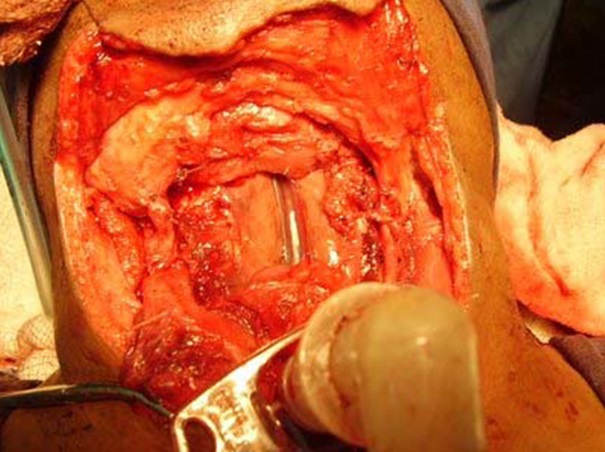 |
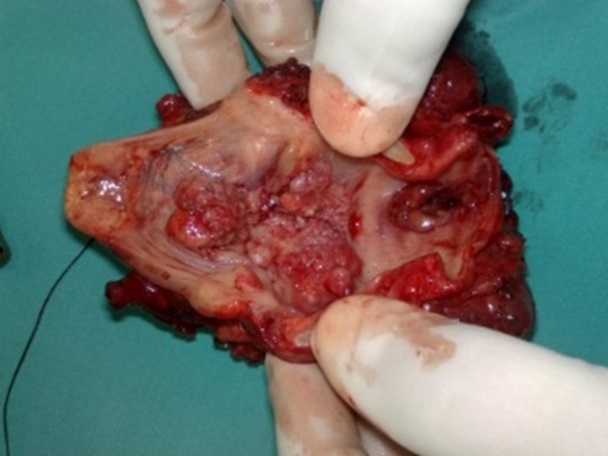 |
|
| Fig.6: Surgical view of the centre of the neck after the larynx has been removed |
Fig.7: The specimen removed consists of the laryngeal parts and the tumour |
What is the outcome after the treatment for this cancer?
If the surgery is successful, the outcome is good. However, it is advised for patient to come for regular follow up checks. This is to detect recurrence at an early stage if at all it occurs.
After vocal fold surgery, will I be able to speak?
For the 1st or 2nd stage of the cancer, after the treatment whether vocal fold surgery or radiotherapy, the patient could still vocalize. In 3rd stage of the disease, after the surgery, the patient could vocalize with some limitation. As for the 4th stage of cancer where the whole larynx is to be removed, the patient will not be able to speak and needs voice rehabilitation and the use of voice prosthesis.
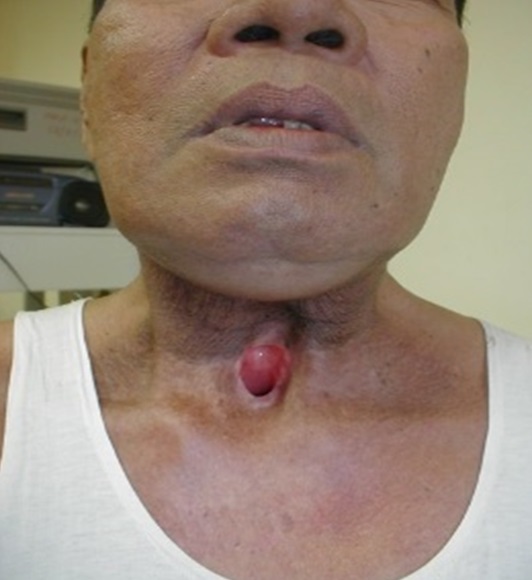 |
Fig.8: Tracheostoma, a permanent hole for breathing is made by bringing the trachea to the skin. |
What are the type of voice rehabilitation and prostheses available?
There are a few ways. There is the device called electro larynx. This device is battery operated and acts as an amplifier which converts the vibration between the tongue and pharynx to produce sound. The sound is then modulated into speech by the movement of the tongue, palate and lips. However, the voice that is produced will sound robotic and it is costly.
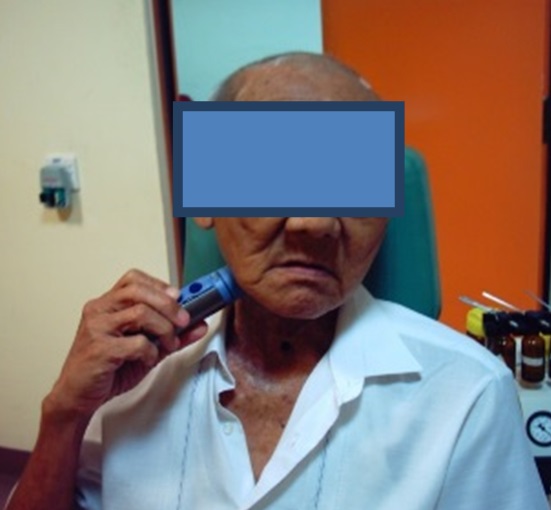 |
Fig.9: The electrolarynx |
The second option requires a surgery which is called trachea-oesophageal puncture. An incision is made between remnant of the pharynx and the trachea where prosthesis is then inserted in to it. It requires patient to close the tracheal opening so that the air from the trachea will enter the pharynx and then into the mouth. With this, the patient is able to talk. This method also has its own problem because it needs replacement when it is not functioning.
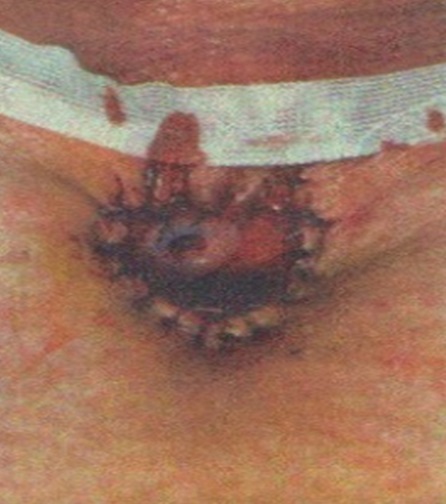 |
Fig.10: The trachea-esophageal prosthesis in the hole communicating the trachea and the remnant of the pharynx, with its flange tapped to the skin |
As for the third option, the artificial pneumatic larynx is. a device placed in between trachea and the mouth, externally. It does not require any surgery but the patient needs to use his hand and mouth to vocalize.
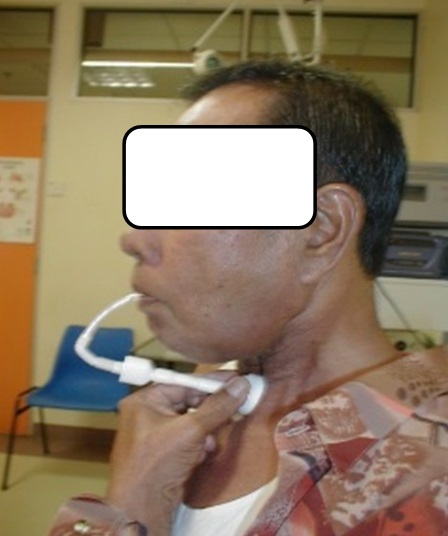 |
Fig.11: The pneumatic larynx requires one end to be placed over the tracheostoma and the other into the mouth |
The 4th option is by using the air from the stomach and expels it slowly through the oesophagus to produce sound as in belching called oesophageal speech. This is the cheapest option and most natural. However it is not popular in Malaysia because it requires a lot of motivation and practice.
What other disability will I have after the surgery?
After surgery of the vocal fold or after radiotherapy, the patient has some hoarseness of the voice.
Laryngectomy will result in the patient having to breathe through a hole made from the trachea to the skin. Subsequently, the patient has to wear protective cover to prevent dust and water from entering it. Regular cleaning of the tracheostoma to remove dry crust is required. Swimming is not encouraged. However, there are protective devices available for this purpose.
Some adjustment is required for the patient to perform daily activities which require straining.
The sense of smell is also affected and retraining may help in the adjustment.
Conclusion
Laryngeal cancer is caused by smoking. It can be treated and the outcome is good. In the early stages of the cancer, the treatment option has fewer side effects but for those of later stages, surgery to remove the larynx is recommended. However, there are several methods of voice rehabilitations available.
| Last Reviewed | : | 13 August 2015 |
| Writer | : | Dr. Hj. Abd. Razak b. Hj. Ahmad |
| Accreditor | : | Dr. Faridah bt. Hassan |


